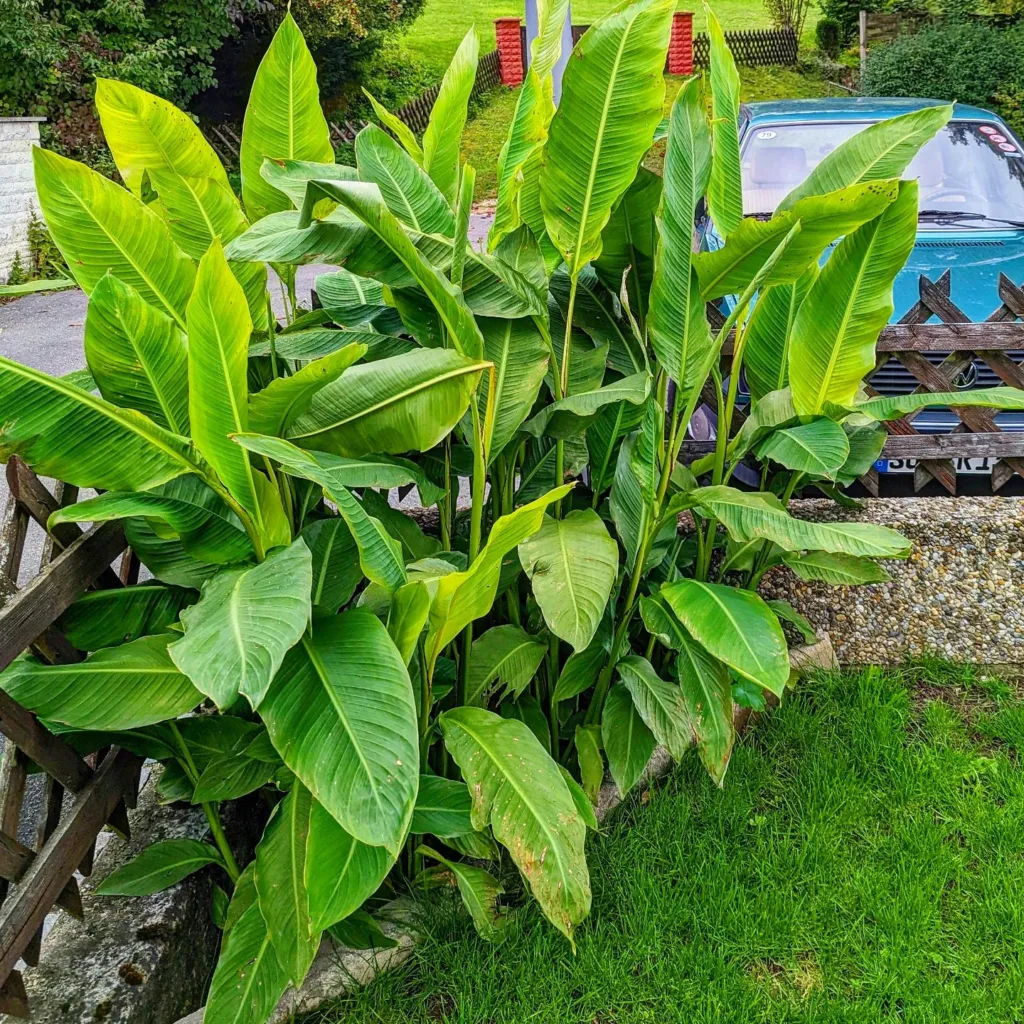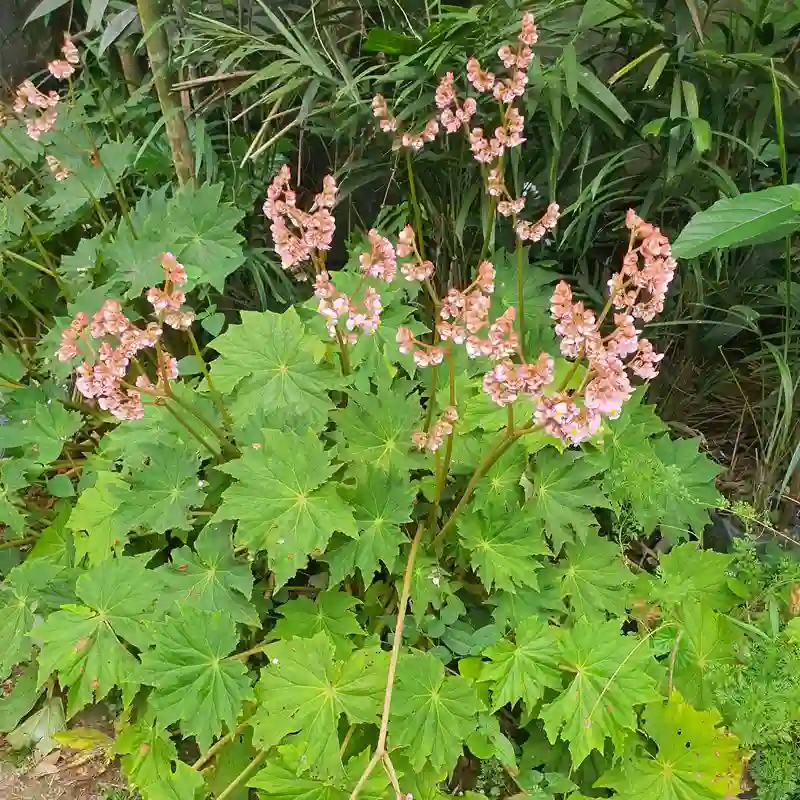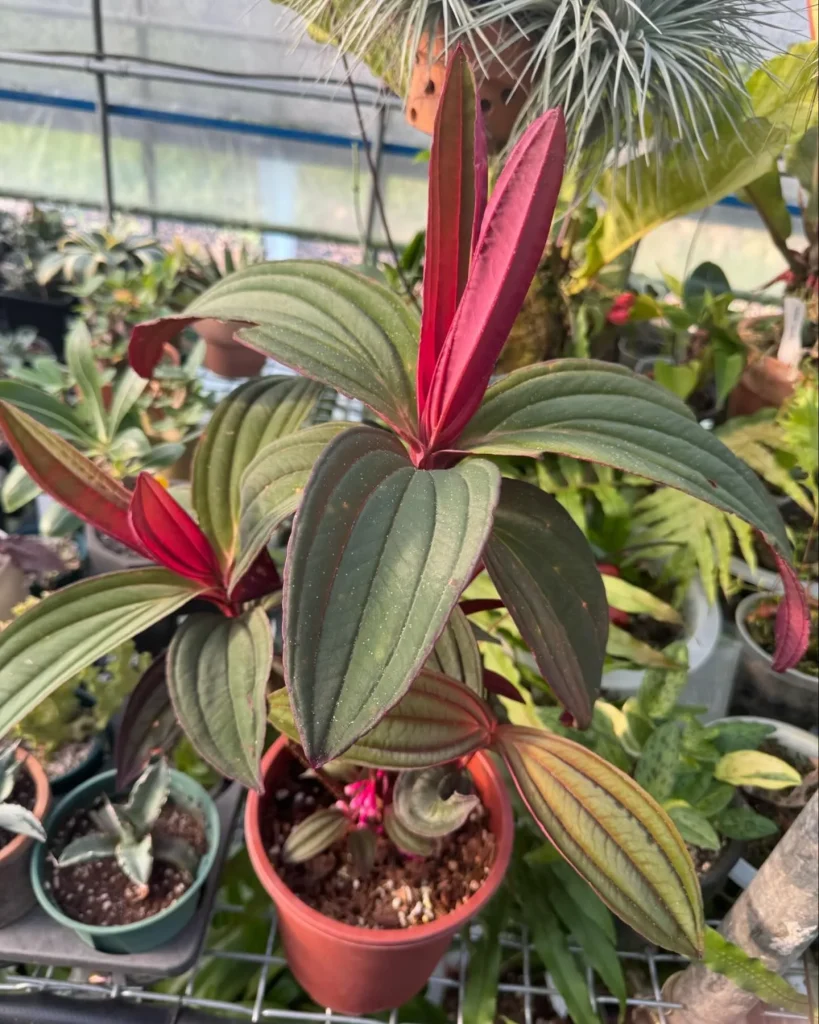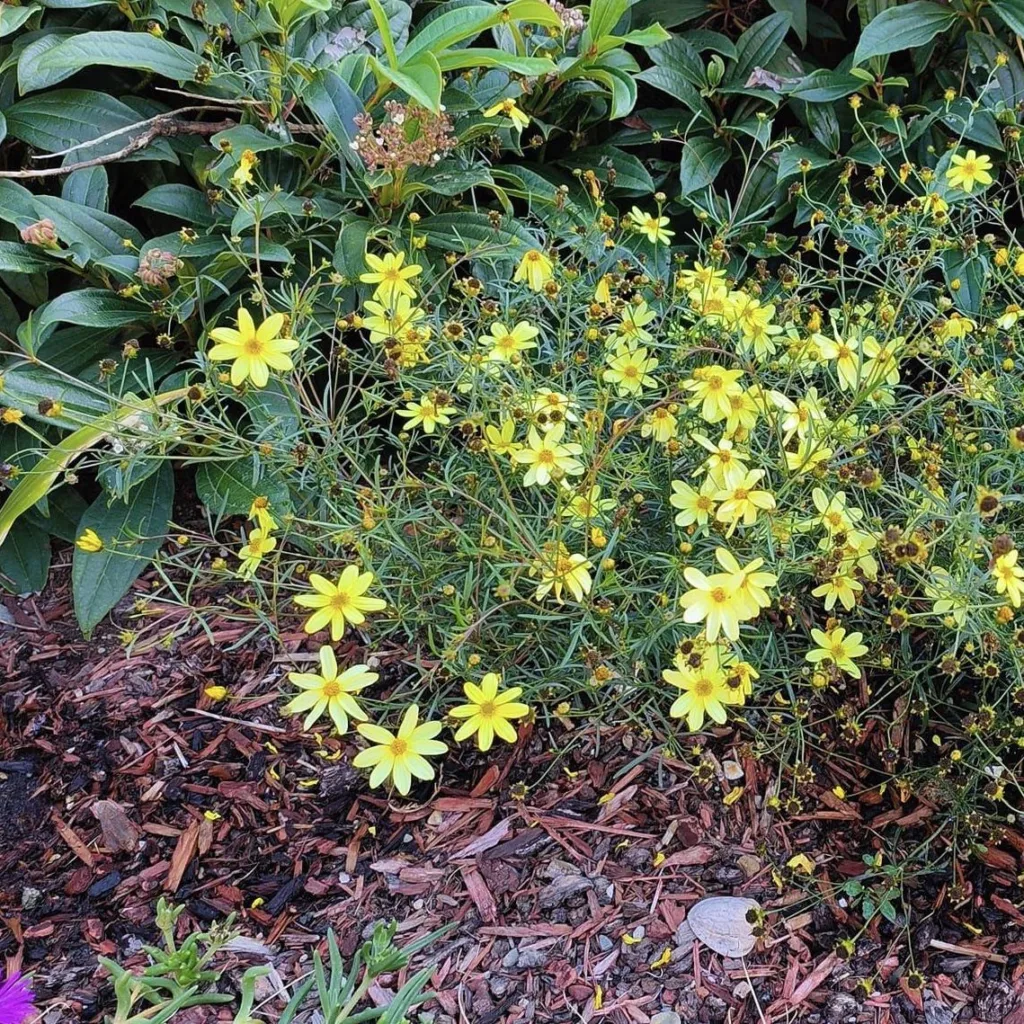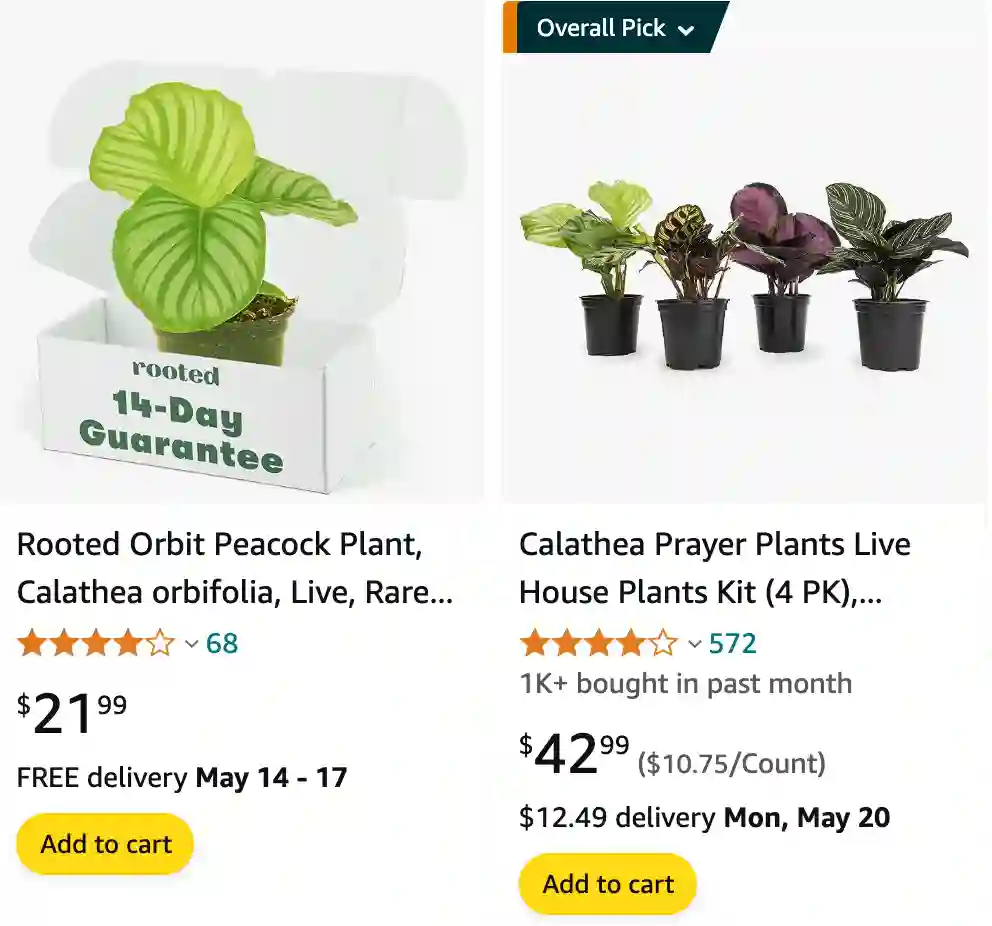
The Calathea Orbifolia, with its striking, broad, and intricately patterned leaves, is a true masterpiece of nature, capable of transforming any indoor space into a tropical oasis. Renowned for its bold, orb-like foliage adorned with delicate silver-green stripes, this plant is a living sculpture that captivates with its beauty and unique “prayer plant” movement, where leaves fold up at night and unfurl with the morning light. While undeniably beautiful, the Orbifolia has earned a reputation for being a bit of a diva, demanding specific conditions to truly flourish. This comprehensive guide will delve into every aspect of Calathea Orbifolia care, from its botanical origins to advanced troubleshooting, ensuring your plant not only survives but thrives. We’ll also embark on a personal 3-year time-lapse journey, sharing the intimate story of cultivating this magnificent plant from a delicate sapling to a grand, mature specimen.
Botanical Profile and Origins
The Calathea Orbifolia belongs to the Marantaceae family, commonly known as the “prayer plant” family, which includes other popular genera like Maranta, Stromanthe, and Ctenanthe. Native to the humid rainforests of Bolivia, this plant thrives in the understory, where it receives dappled sunlight filtered through the dense canopy above. Its natural habitat provides the key clues to its care requirements: high humidity, consistent moisture, and indirect light.
The distinctive feature of the Calathea Orbifolia is its large, round leaves, which can grow up to a foot in diameter. The upper surface of the leaves displays a mesmerizing pattern of light green veins against a darker green background, creating a visually stunning effect. The undersides are typically a paler green, sometimes with a subtle purple hue. Like other Calatheas, the Orbifolia exhibits nyctinasty, a circadian rhythmic leaf movement where the leaves fold upwards at dusk and lower themselves at dawn, a phenomenon believed to conserve moisture and protect against nocturnal predators.
Is Calathea Orbifolia Toxic to Pets? A Crucial Concern
One of the most pressing questions for any plant parent is the safety of their botanical companions around furry friends. The good news is that Calathea Orbifolia is generally considered non-toxic to cats and dogs. This makes it a popular choice for pet owners who want to add lush greenery to their homes without the constant worry of accidental ingestion leading to severe health issues.
While Calatheas are not known to cause serious poisoning, it’s important to understand that no plant is entirely “safe” if consumed in large quantities. Any plant material, if eaten excessively, can potentially lead to mild digestive upset in pets, such as vomiting or diarrhea, simply due to the fibrous nature of the plant. Therefore, while you can breathe a sigh of relief regarding severe toxicity, it’s still advisable to discourage your pets from munching on your Calathea Orbifolia’s leaves. Placing the plant out of easy reach, especially for curious kittens or puppies, is always a sensible precaution to prevent any minor tummy troubles and to preserve the beauty of your plant.
The Gardener’s 3-Year Time Lapse Journey: Cultivating Grandeur
Year 1: The Delicate Beginning – A Sapling’s First Steps
“It was a crisp spring morning, three years ago, when I first brought my Calathea Orbifolia home. It was a modest sapling, perhaps a foot tall, with just a few perfectly round, striped leaves. I was captivated by its elegance, but also a little intimidated by its reputation as a ‘fussy’ plant. My mission was clear: to provide the perfect rainforest haven within my living room.
My first challenge was light. I knew it needed bright, indirect light, so I placed it near a north-facing window, ensuring no direct sunbeams would scorch its delicate foliage. Watering was a daily dance of observation. I learned quickly that it hated soggy feet but despised dry soil. I settled on watering when the top inch of soil felt just barely dry, which, in those early days, was about every 5-7 days. The biggest hurdle, however, was humidity. Living in a relatively dry climate, I knew I had to act. I bought a small humidifier and placed it right next to the plant, setting it to maintain a constant 60-70% humidity. I also started misting its leaves daily, a ritual that quickly became therapeutic.
The first few weeks were a learning curve. A leaf tip browned slightly, a gentle reminder that my humidity wasn’t quite right. Another time, a leaf curled inwards, signaling thirst. But with each slight adjustment, the plant responded. By the end of the first month, a new leaf unfurled, a vibrant, perfect circle, and I felt a surge of triumph. This wasn’t just a plant; it was a living, breathing challenge, and I was determined to win.”
Essential Care Guide: Laying the Foundation for Growth
Light Requirements: The Dappled Forest Floor
Calathea Orbifolia thrives in bright, indirect light, mimicking its natural rainforest understory habitat.
- Ideal Placement: A north-facing window is often perfect. East-facing windows can also work, provided the morning sun is not too intense. If placing near a south or west-facing window, ensure it’s several feet away or protected by sheer curtains to diffuse the light.
- Signs of Too Much Light: Scorched, bleached, or faded leaves. The vibrant patterns may also dull.
- Signs of Too Little Light: Slow growth, smaller leaves, and less pronounced patterns. The plant may also become leggy as it stretches for light.
- Avoid Direct Sun: Direct sunlight will quickly burn the delicate leaves, leading to irreversible damage.
Watering Needs: The Rainforest’s Gentle Rain
Consistent moisture is key for Calathea Orbifolia, but overwatering is a common pitfall.
- Frequency: Water when the top 1-2 inches of soil feel dry to the touch. This typically translates to once a week during the growing season (spring and summer) and less frequently in winter (every 10-14 days), depending on your home’s conditions.
- Method: Water thoroughly until water drains from the bottom of the pot. Discard any excess water from the saucer to prevent root rot.
- Water Quality: Calatheas are sensitive to chemicals found in tap water, particularly chlorine and fluoride. These can cause brown tips and edges on leaves. Use filtered water, distilled water, or rainwater. Alternatively, let tap water sit out for 24 hours to allow chlorine to dissipate (though this won’t remove fluoride).
- Signs of Underwatering: Drooping leaves, crispy leaf edges, and the soil pulling away from the pot’s sides.
- Signs of Overwatering: Yellowing leaves, mushy stems, and a sour smell from the soil, indicating root rot.
Humidity: The Tropical Embrace
High humidity is non-negotiable for Calathea Orbifolia. Its native environment boasts humidity levels often exceeding 80%.
- Ideal Range: Aim for 60-80% humidity.
- Methods to Increase Humidity:
- Humidifier: This is the most effective method, especially in dry climates. Place a humidifier near your plant.
- Pebble Tray: Place the pot on a tray filled with pebbles and water, ensuring the bottom of the pot doesn’t sit directly in the water. As the water evaporates, it increases local humidity.
- Grouping Plants: Plants release moisture through transpiration, so grouping them together can create a microclimate with higher humidity.
- Misting: While misting provides temporary relief, it’s not a long-term solution for humidity. It can also encourage fungal issues if water sits on leaves for too long. If you do mist, ensure good air circulation.
Soil and Potting: The Anchoring Ground
A well-draining yet moisture-retentive soil mix is crucial for Calathea Orbifolia.
- Ideal Soil Mix: A mix rich in organic matter that allows for good aeration and drainage while retaining some moisture. A good recipe includes:
- 2 parts peat moss or coco coir (for moisture retention)
- 1 part perlite or pumice (for drainage and aeration)
- 1 part orchid bark or charcoal (for aeration and preventing compaction)
- Pot Type: Choose a pot with drainage holes. Terracotta pots can wick away moisture too quickly, so plastic or glazed ceramic pots are often preferred to maintain consistent soil moisture.
- Repotting: Repot every 1-2 years, or when the plant becomes root-bound, typically in spring. Choose a pot only one size larger than the current one.
Fertilization: Nourishing Growth
During the growing season, Calathea Orbifolia benefits from regular feeding.
- Frequency: Fertilize every 2-4 weeks during spring and summer. Reduce or stop fertilization during fall and winter when growth slows.
- Type: Use a balanced liquid fertilizer (e.g., 10-10-10 or 20-20-20) diluted to half strength.
- Caution: Over-fertilization can lead to nutrient burn, appearing as brown leaf tips and edges. Always water the plant thoroughly before fertilizing to prevent root burn.
Temperature: The Warmth of the Tropics
Calatheas are sensitive to temperature fluctuations and drafts.
- Ideal Range: Maintain a consistent temperature between 18∘C and 29∘C (65∘F and 85∘F).
- Avoid Extremes: Protect from cold drafts from windows or air conditioners, and sudden drops in temperature, which can cause leaf curling and stress.
Pruning: Maintaining Form and Health
Pruning Calathea Orbifolia is primarily for aesthetic purposes and to remove unhealthy foliage.
- Method: Use clean, sharp scissors or pruning shears.
- What to Prune: Remove any yellowing, browning, or damaged leaves by cutting them at the base of the stem. This directs the plant’s energy towards new, healthy growth.
- Frequency: Prune as needed, usually a few times a year.
Propagation: Expanding Your Collection
The most common and effective method for propagating Calathea Orbifolia is through division during repotting.
- Timing: Best done in spring or early summer when the plant is actively growing.
- Process:
- Carefully remove the plant from its pot.
- Gently loosen the soil around the root ball.
- Identify natural divisions or clumps with their own root systems.
- Carefully separate these clumps, ensuring each new division has a healthy section of roots and at least a few leaves. You may need to use a clean, sharp knife for stubborn divisions.
- Pot each division into its own small pot with fresh, appropriate soil mix.
- Water thoroughly and place in a warm, humid environment with indirect light to help them establish.
Flowering: A Rare Indoor Treat
While Calathea Orbifolia can produce flowers, it’s a rare occurrence when grown indoors. In their native habitat, they produce small, inconspicuous white or yellow flowers at the base of the plant. Indoors, the conditions are seldom ideal enough to trigger blooming. However, the plant’s stunning foliage is its primary appeal, making the absence of flowers largely irrelevant to its ornamental value.
Growth Rate and Size: A Journey to Grandeur
Calathea Orbifolia is not a rapid grower, but it exhibits a steady growth rate under optimal conditions.
- Growth Rate: You can expect new leaves to unfurl every few weeks during the peak growing season (spring and summer).
- Mature Size: With proper care, a mature Calathea Orbifolia can reach impressive dimensions, typically growing up to 2-3 feet (60-90 cm) in height and width, with individual leaves spanning up to 12 inches (30 cm) across. Its large, round leaves make it a true statement plant.
Year 2: Maturation and Expanding Foliage – The Lush Canopy
“By the start of its second year, my Calathea Orbifolia was no longer a sapling. It had doubled in size, its leaves growing larger and the characteristic stripes becoming more pronounced. The initial struggles with humidity and watering had paid off, and the plant was visibly happy, unfurling new leaves with satisfying regularity.
This year was about consistency and subtle adjustments. As the plant grew, its water needs increased slightly. I found myself watering closer to every 5 days during the warmer months. I also started a regular fertilization schedule, using a diluted liquid feed every three weeks, which seemed to fuel its impressive leaf production. The humidifier became a permanent fixture, and I even added a second, smaller one, realizing the plant truly craved that high humidity.
I also began to notice its ‘prayer’ movements more distinctly. In the evenings, the leaves would gracefully rise, almost as if in silent reverence, only to lower again with the first hint of dawn. It was a subtle, mesmerizing dance that reminded me of its wild origins. I had to repot it once during this year, moving it into a slightly larger pot. It was a delicate operation, but the plant barely skipped a beat, quickly settling into its new home and continuing its vigorous growth. The sheer size of the new leaves was breathtaking, each one a perfect, symmetrical orb.”
Common Problems and Troubleshooting: Decoding Your Plant’s Signals
Understanding your Calathea Orbifolia’s signals is key to its long-term health.
- Drooping Leaves:
- Cause: Most commonly, underwatering. The plant is trying to conserve moisture.
- Solution: Check soil moisture. If dry, water thoroughly.
- Other Causes: Overwatering (leading to root rot, which prevents water uptake), cold drafts, or sudden temperature changes.
- Brown Leaf Tips/Edges:
- Cause: Low humidity is the primary culprit. Also, inconsistent watering, fluoride/chlorine in tap water, or nutrient burn from over-fertilization.
- Solution: Increase humidity (humidifier!), use filtered water, ensure consistent watering, and check fertilizer strength.
- Curling Leaves:
- Cause: A strong indicator of thirst (underwatering) or extremely low humidity. It’s the plant’s way of trying to reduce water loss.
- Solution: Water if the soil is dry; increase humidity immediately.
- Yellowing Leaves:
- Cause: Often a sign of overwatering and potential root rot. Can also be due to nutrient deficiency (though less common if fertilizing) or natural aging of lower leaves.
- Solution: Check soil moisture, allow soil to dry out more between waterings. If root rot is suspected, repot and trim affected roots.
- Faded Patterns/Dull Color:
- Cause: Too much direct light.
- Solution: Move the plant to a shadier spot with bright, indirect light.
- Pests:
- Common Pests: Spider mites, mealybugs, and thrips are the most common culprits, often attracted by low humidity.
- Signs: Small webs (spider mites), white cottony masses (mealybugs), or tiny, elongated insects and distorted new growth (thrips).
- Solution: Isolate the plant. Treat with insecticidal soap, neem oil, or horticultural oil. Regular inspection and maintaining high humidity can deter pests.
- Diseases:
- Common Diseases: Fungal leaf spot (from excessive moisture on leaves or poor air circulation) and root rot (from overwatering).
- Signs: Dark spots on leaves, mushy stems.
- Solution: Improve air circulation, avoid misting excessively, and adjust watering practices. Remove affected leaves.
Year 3: The Grand Finale – A Statement Plant
“Now, as my Calathea Orbifolia enters its third year, it is a magnificent specimen. It stands nearly three feet tall, a verdant fountain of enormous, perfectly round, striped leaves that command attention in the room. Each new leaf that emerges is a testament to the consistent care and patience I’ve invested. The patterns are richer, the leaves more robust, and its nightly prayer dance more pronounced than ever.
This year has been about enjoying the fruits of my labor. The routine is ingrained: check the soil, refill the humidifier, wipe down the leaves to keep them dust-free and allow for optimal photosynthesis. I’ve learned to anticipate its needs before it even shows signs of distress. It’s a living barometer of my home’s environment, reminding me when the air is too dry or when I’ve been neglectful with the watering can.
I’ve experimented with placing it in different spots, always ensuring the light is indirect but bright. It has become the centerpiece of my plant collection, drawing admiring glances from everyone who visits. It’s a constant source of joy and a beautiful reminder that with understanding and dedication, even the most demanding plants can flourish and become truly spectacular. From a small, unassuming sapling, it has grown into a grand, lush statement, a living sculpture that brings a piece of the Bolivian rainforest into my everyday life.”
Where to Buy Calathea Orbifolia
Calathea Orbifolia has become increasingly popular, making it more accessible than in previous years.
- Local Nurseries and Garden Centers: Many well-stocked plant shops and garden centers now carry Calathea Orbifolia, especially larger ones. This allows you to inspect the plant in person for health and quality.
- Online Plant Retailers: Numerous online plant shops specialize in houseplants, including Calatheas. This is a great option for finding specific sizes or if local availability is limited. Be sure to choose reputable sellers with good reviews to ensure the plant arrives healthy and well-packaged.
- Big Box Stores: Occasionally, you might find them at larger retailers with garden sections, though the quality and care might vary.
Conclusion: A Rewarding Journey
The Calathea Orbifolia is undoubtedly a plant that asks for attention, but the rewards it offers in return are immense. Its unparalleled beauty, unique leaf movements, and the satisfaction of mastering its care make it a truly captivating addition to any indoor plant collection. From the initial delicate sapling to a towering, lush specimen, the journey of cultivating a Calathea Orbifolia is a rewarding time-lapse experience that deepens your connection with the natural world and transforms your living space into a vibrant, botanical sanctuary. Embrace the challenge, understand its needs, and your Calathea Orbifolia will thrive, becoming a magnificent testament to your dedication and a constant source of natural elegance.
If i die, water my plants!
